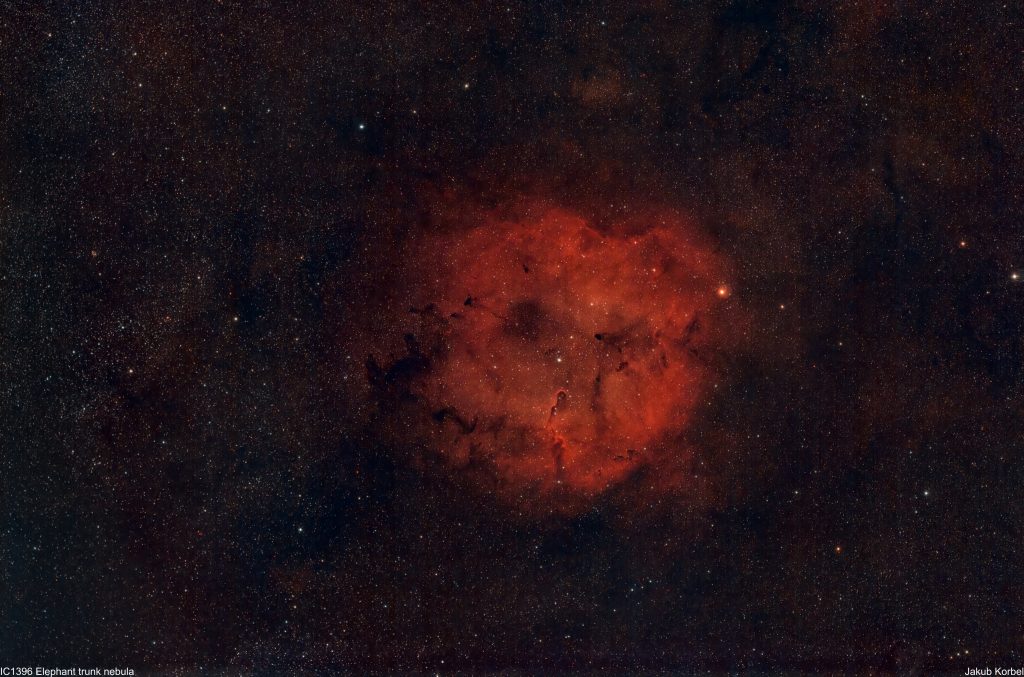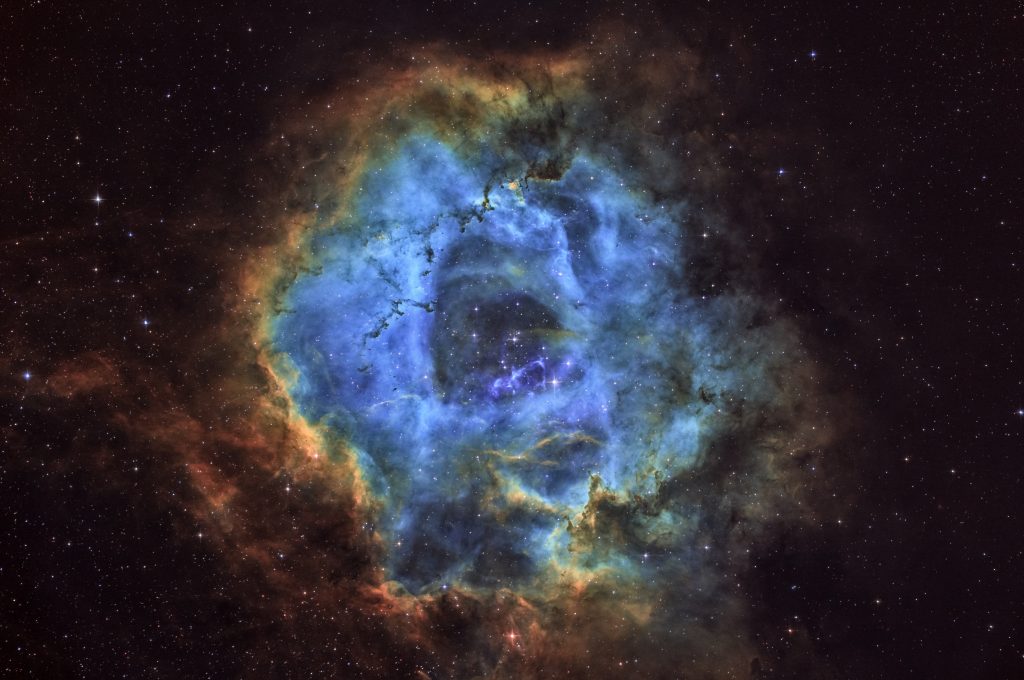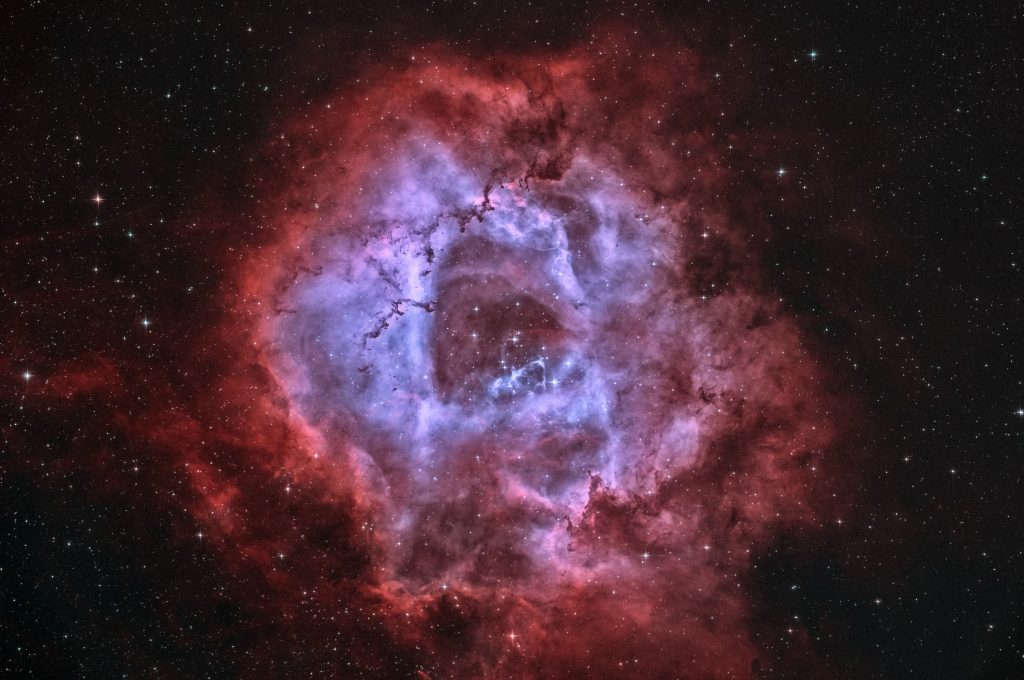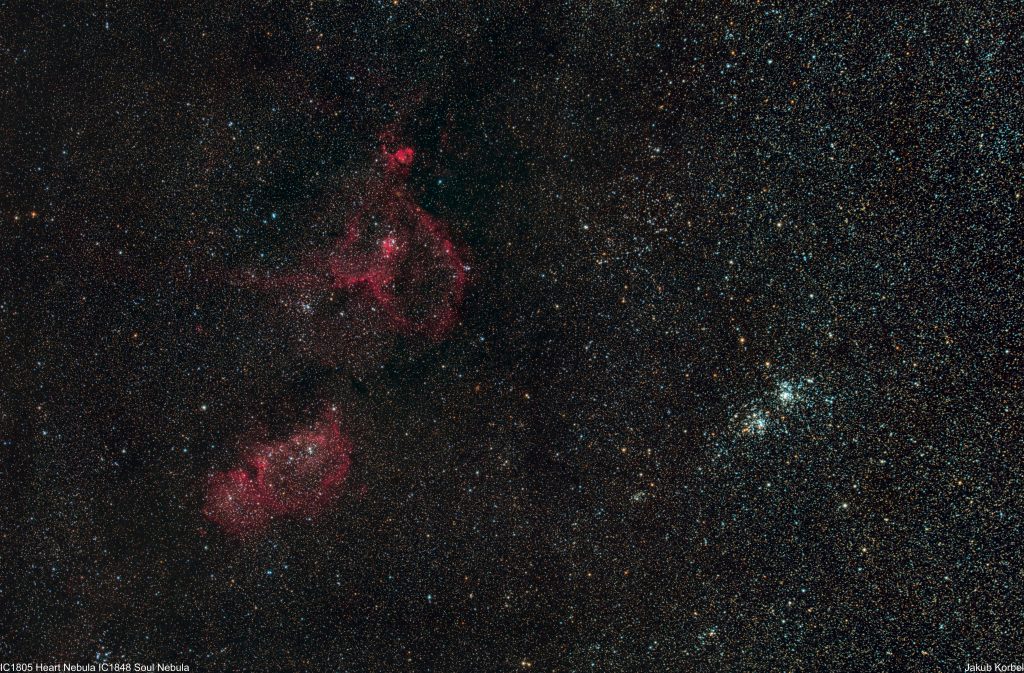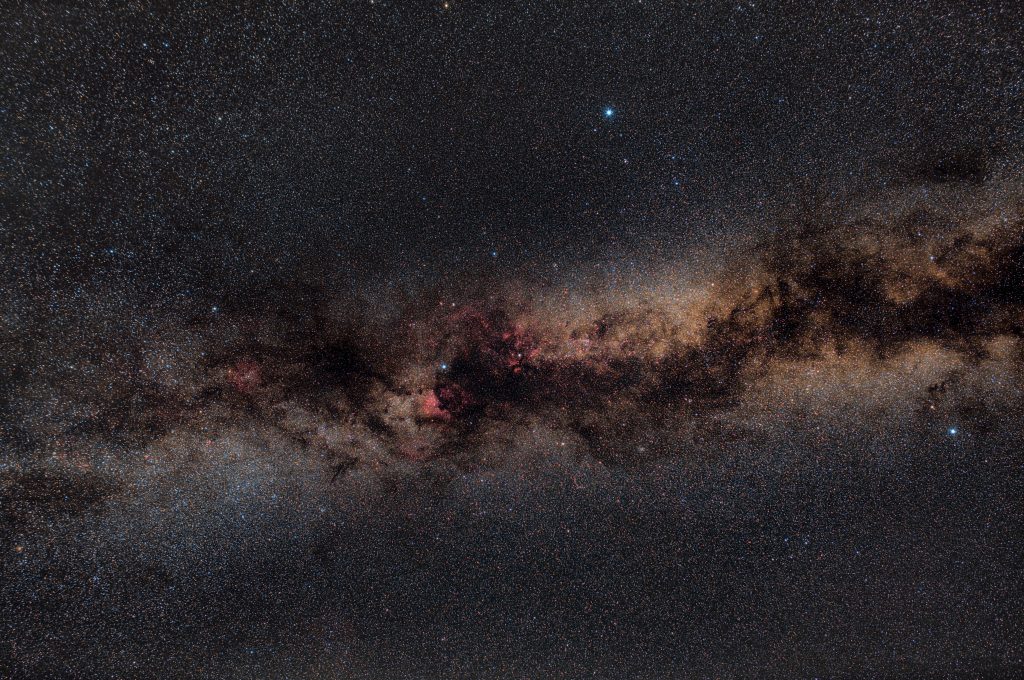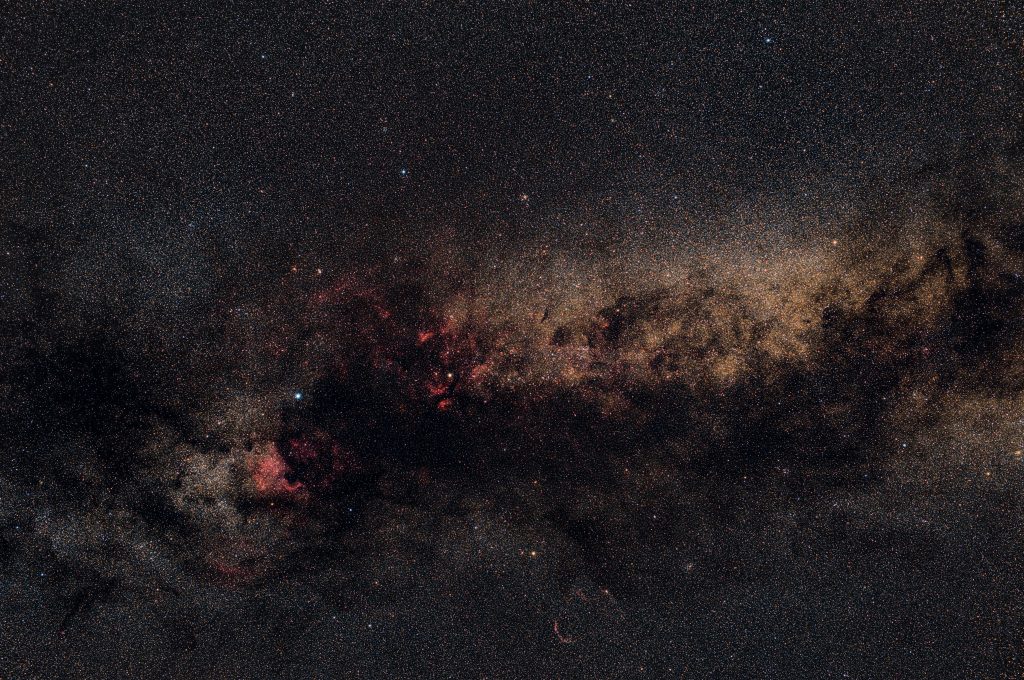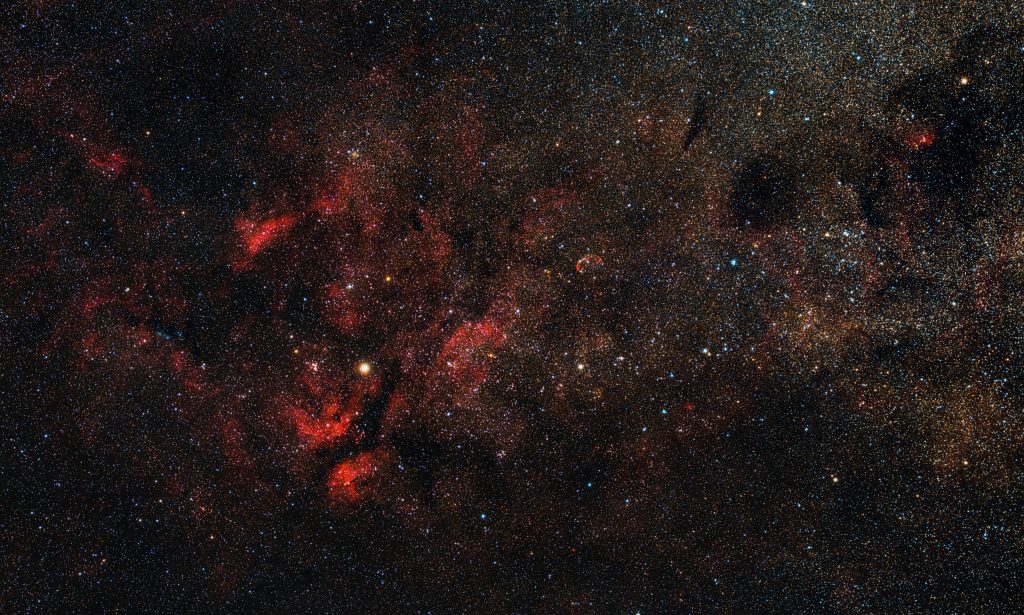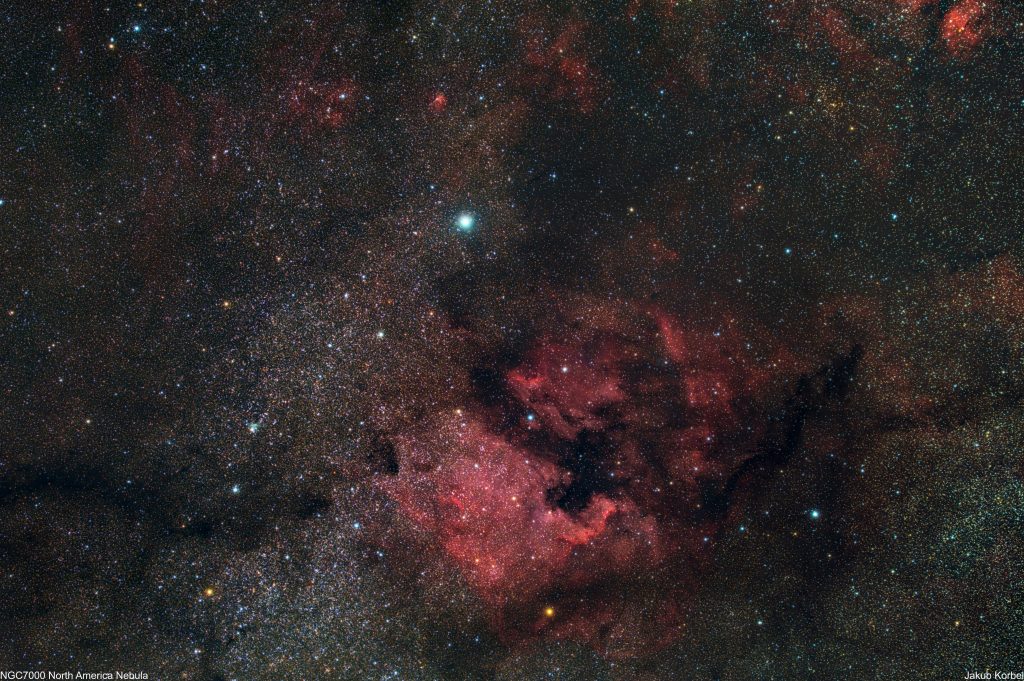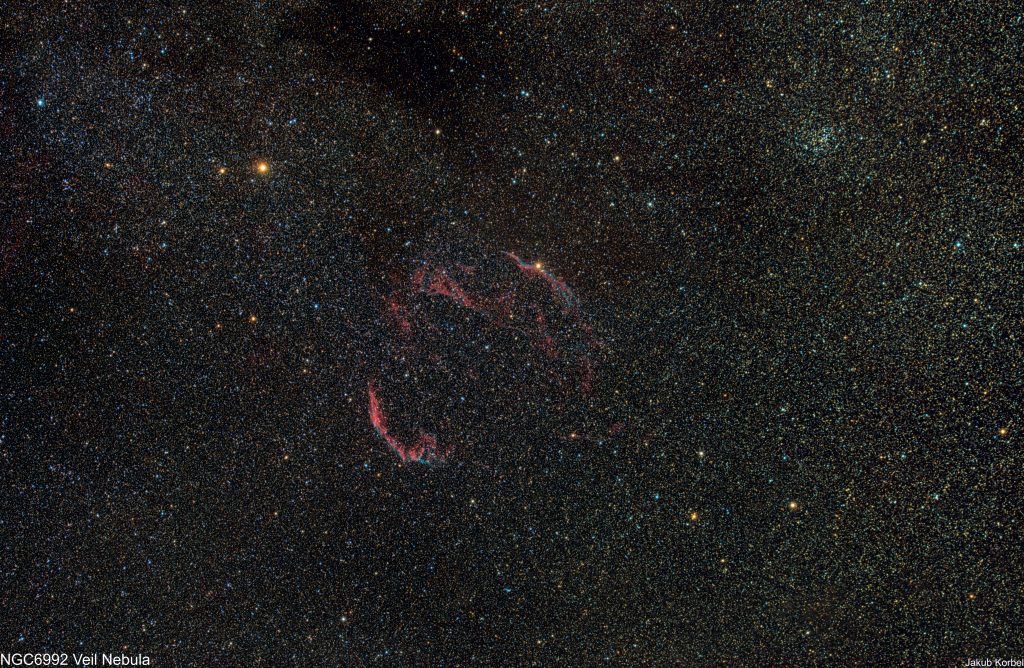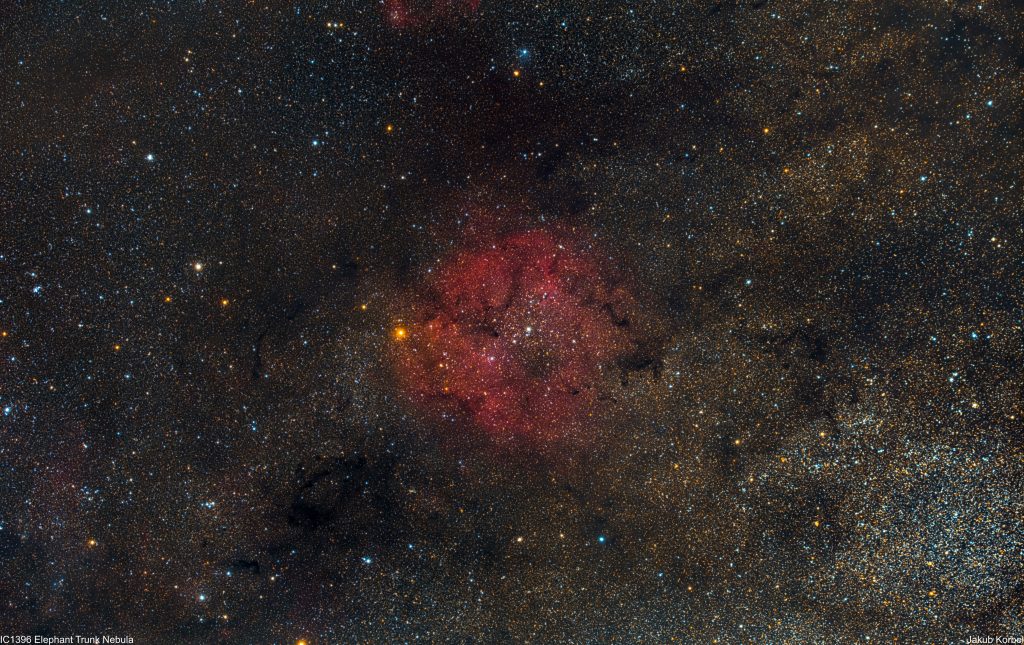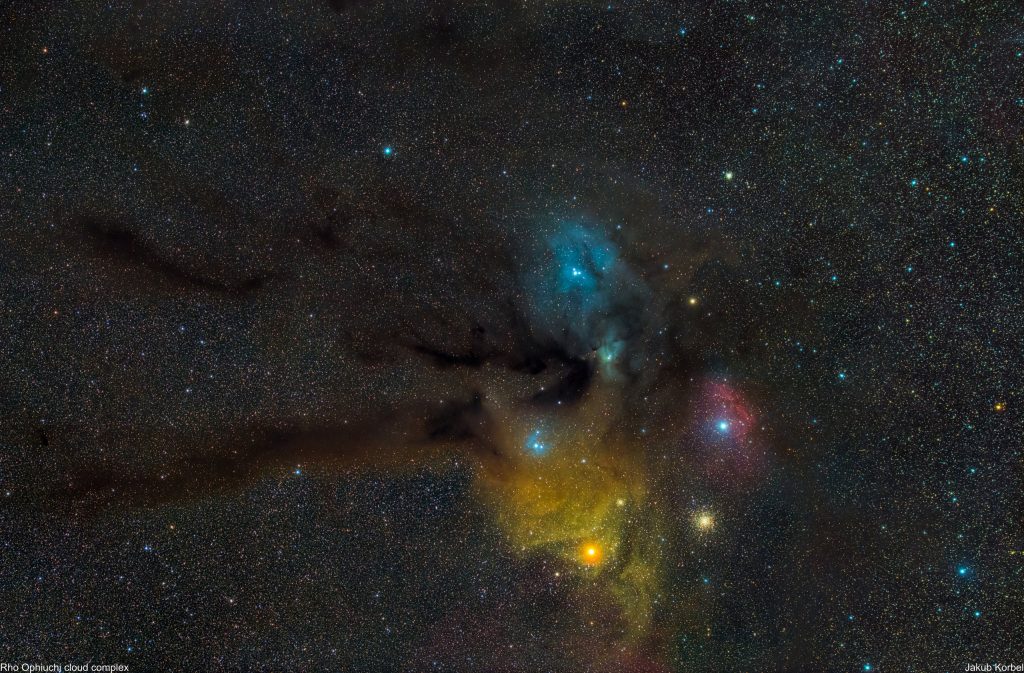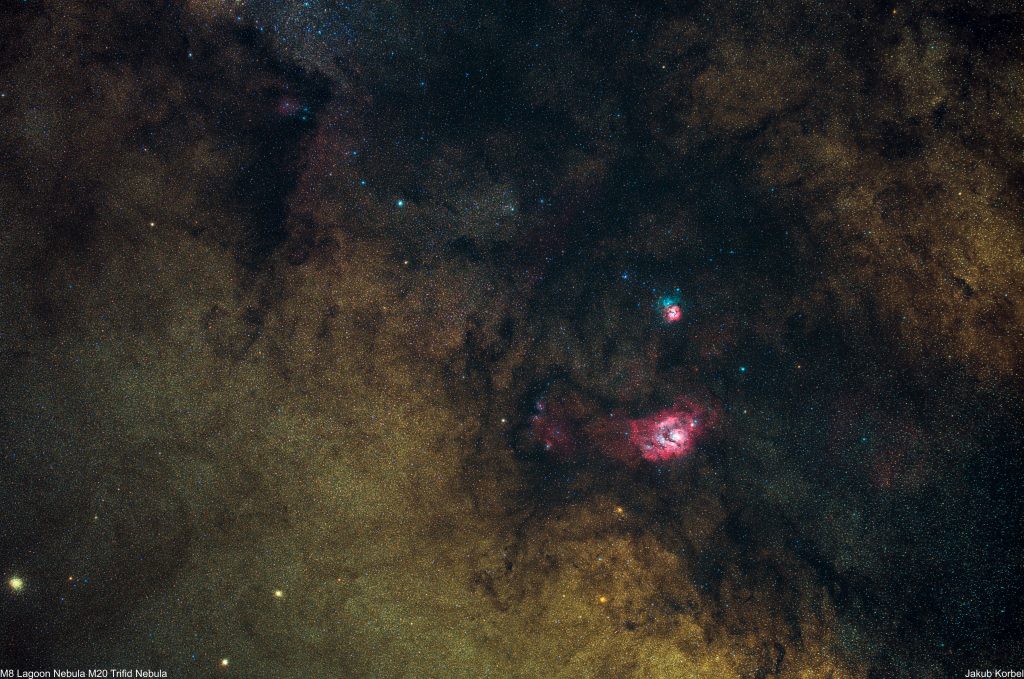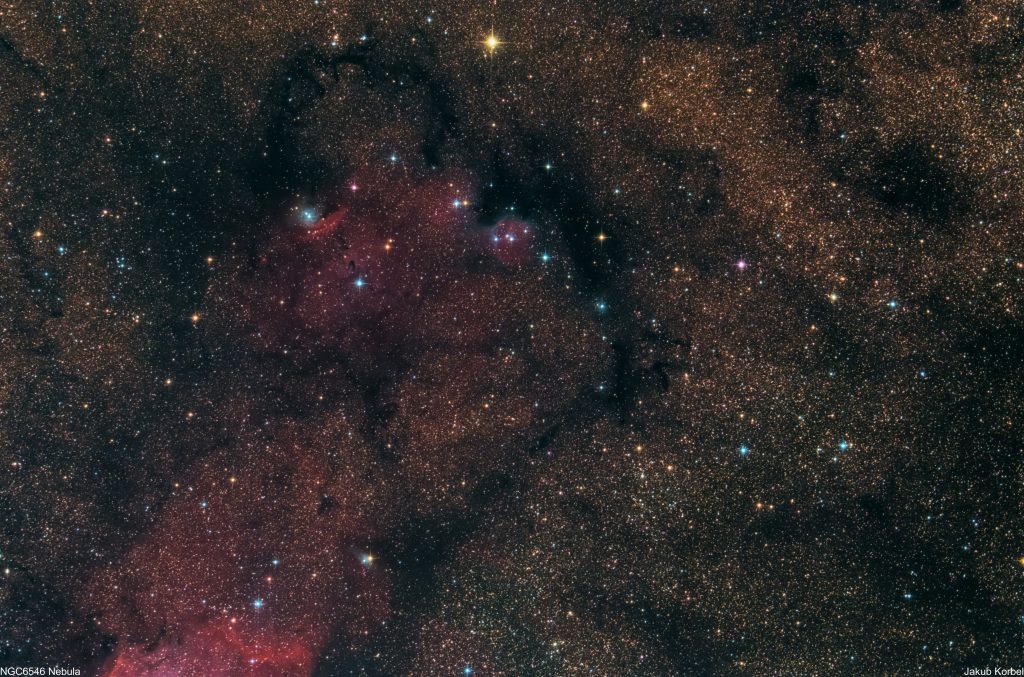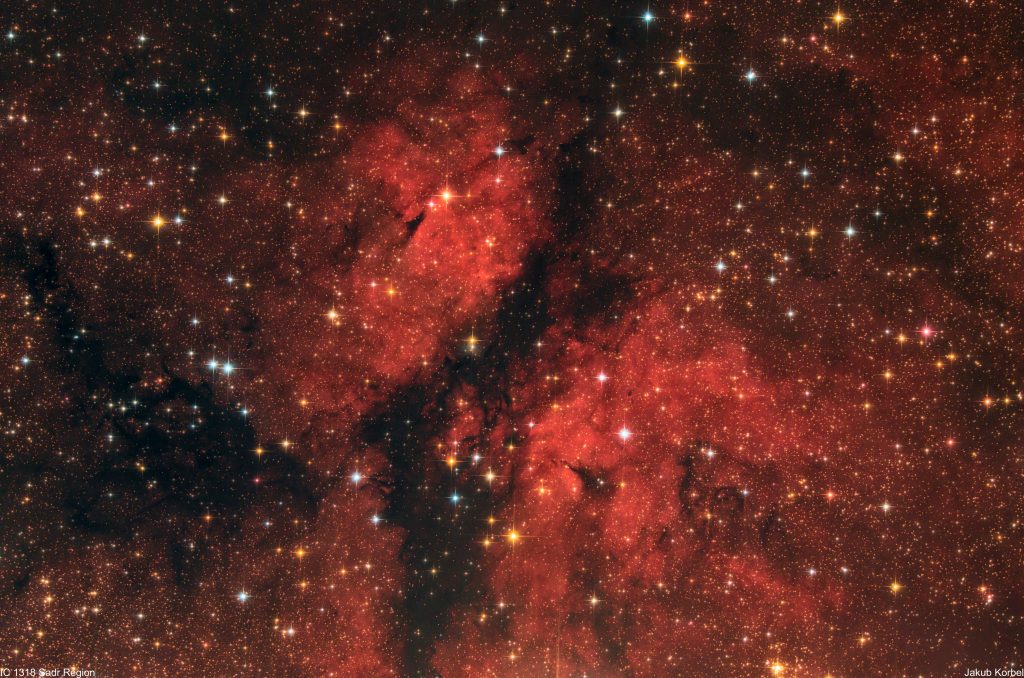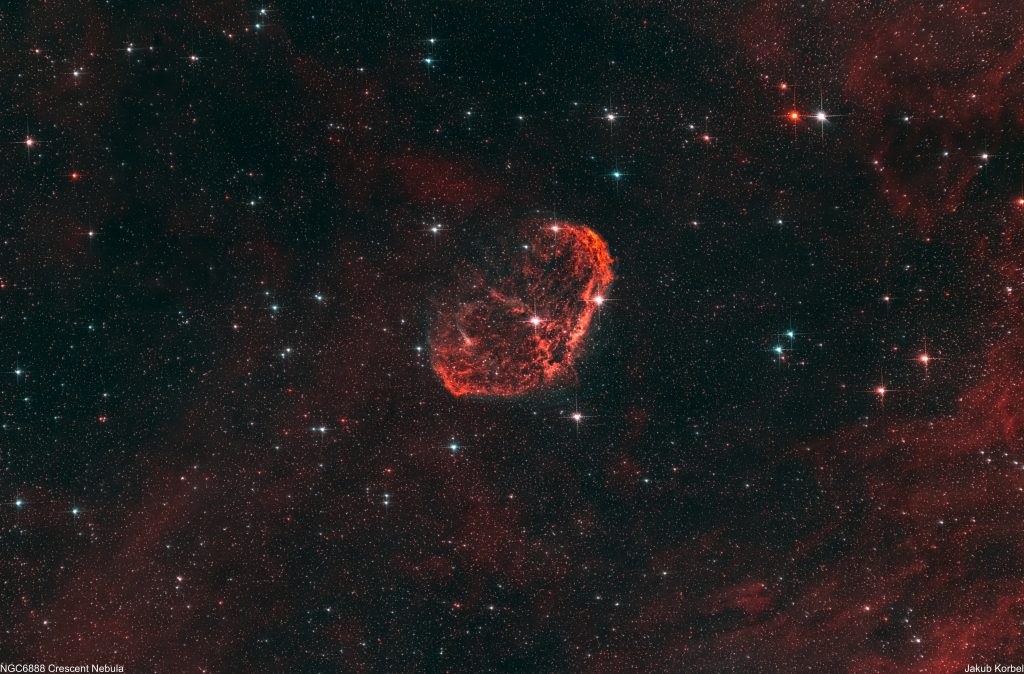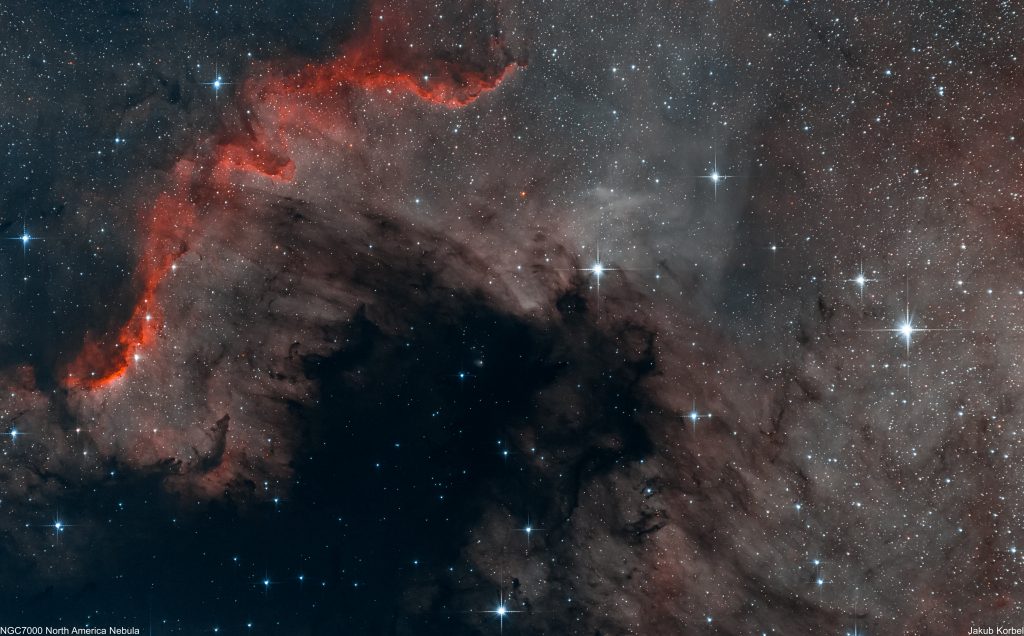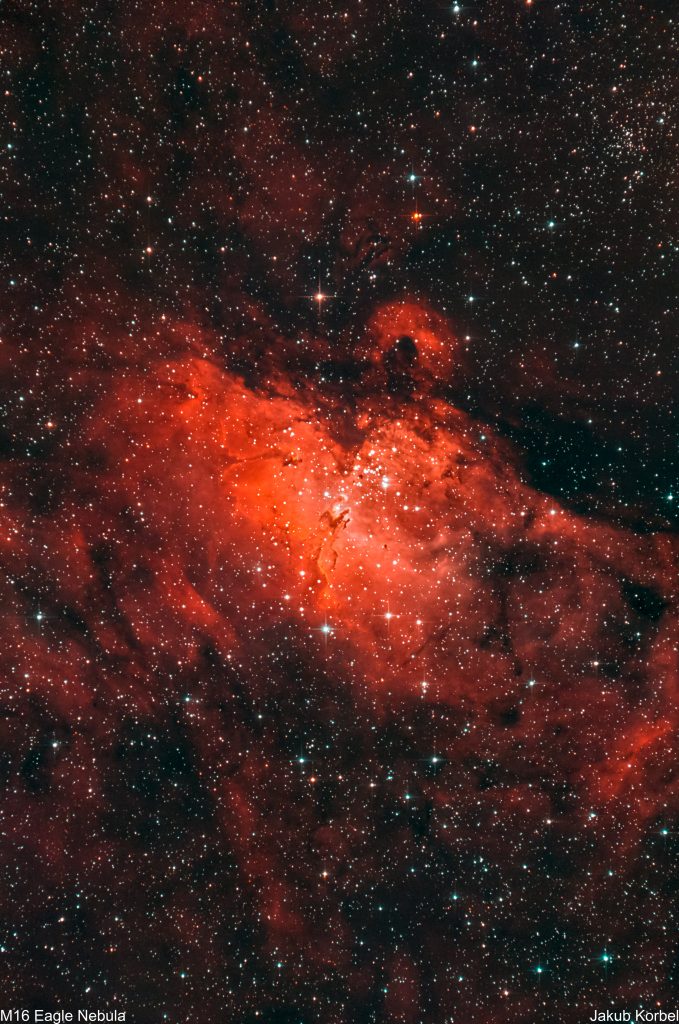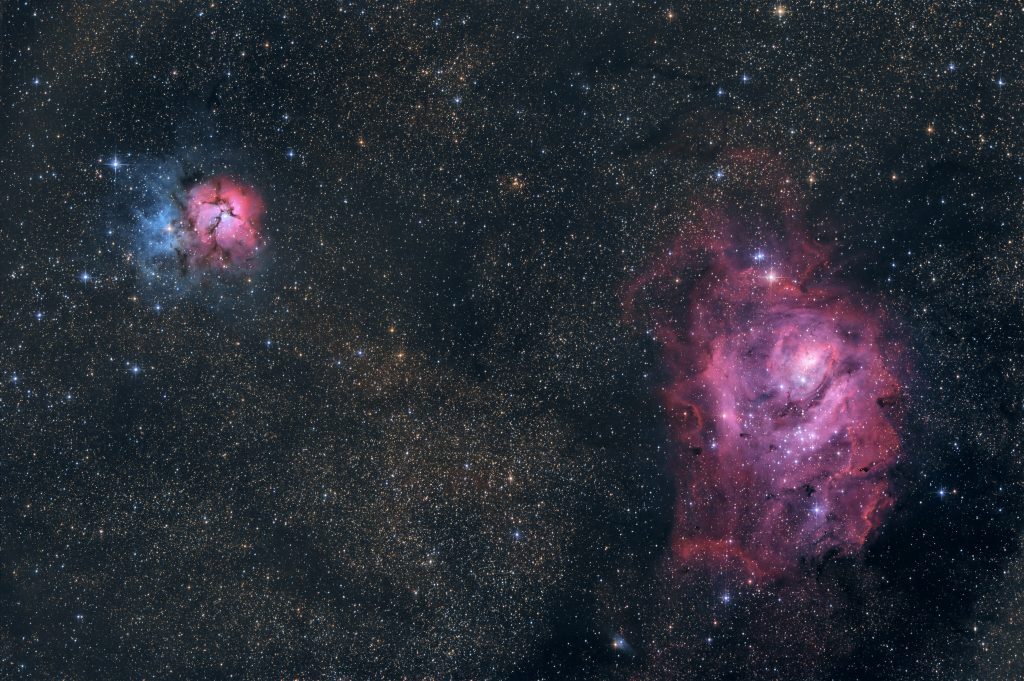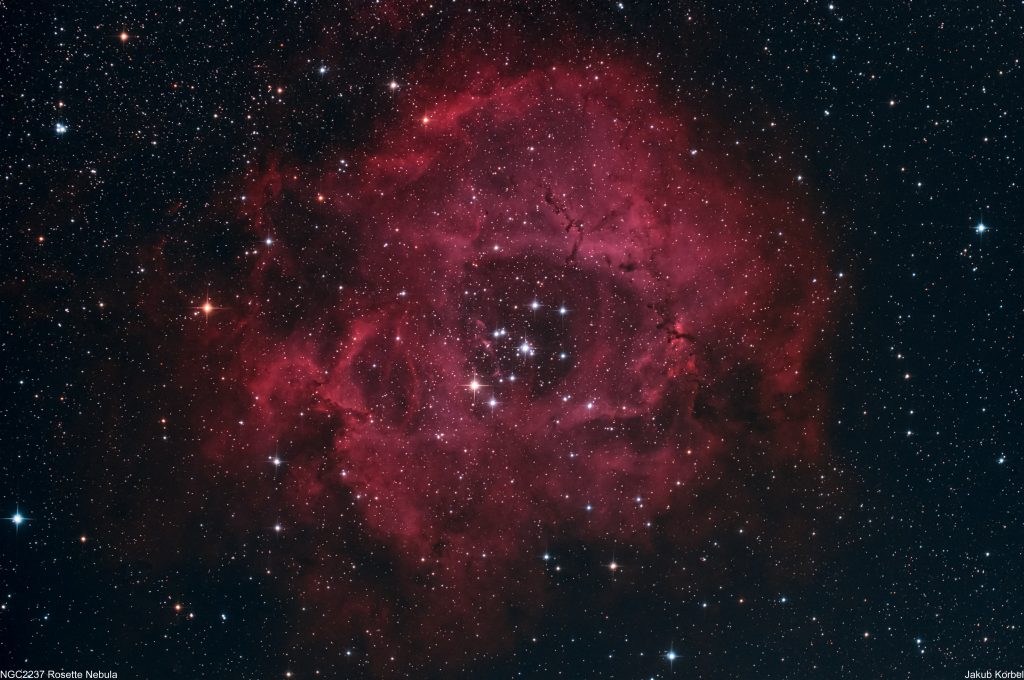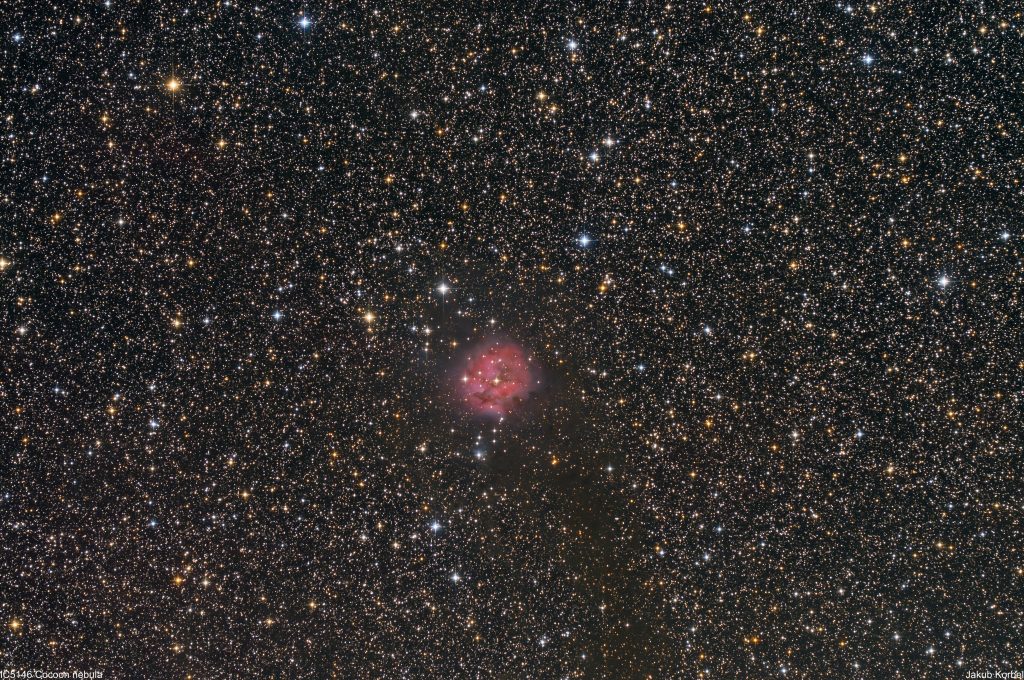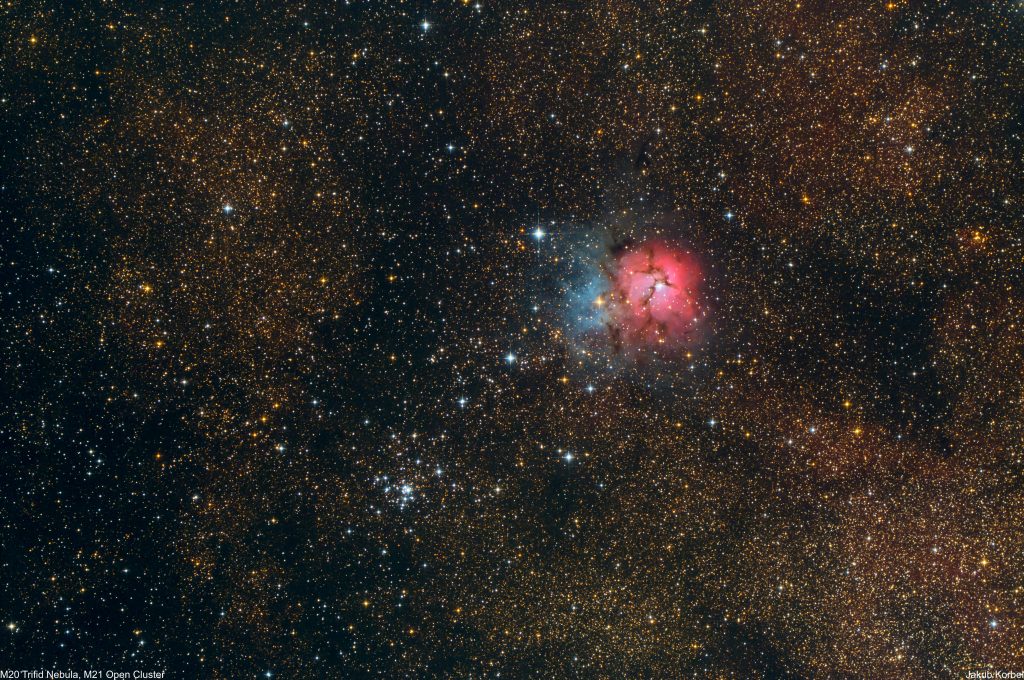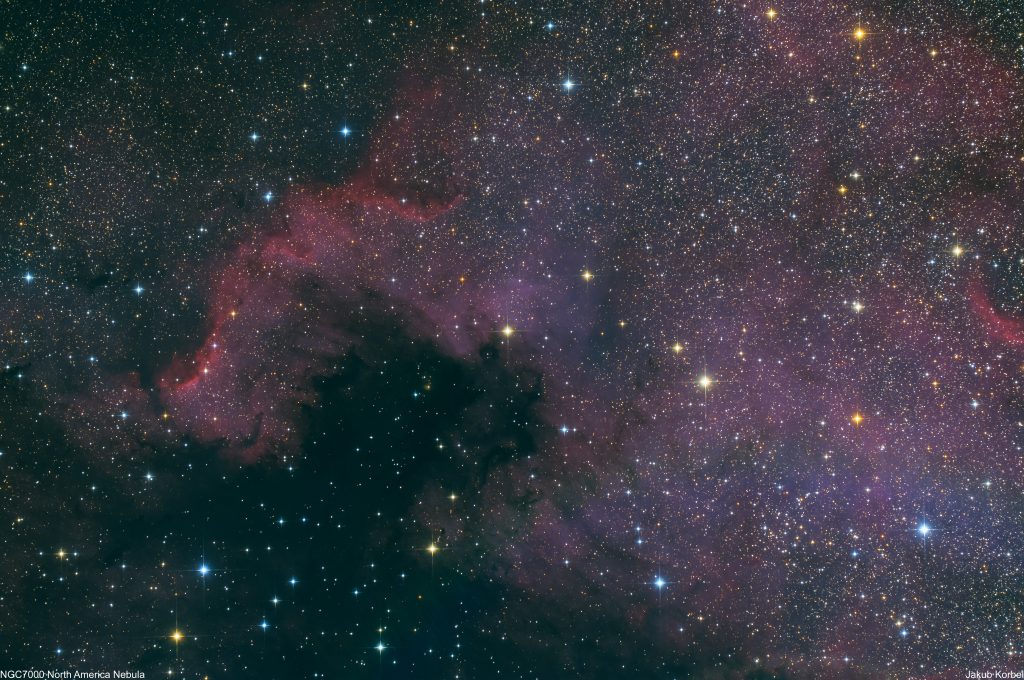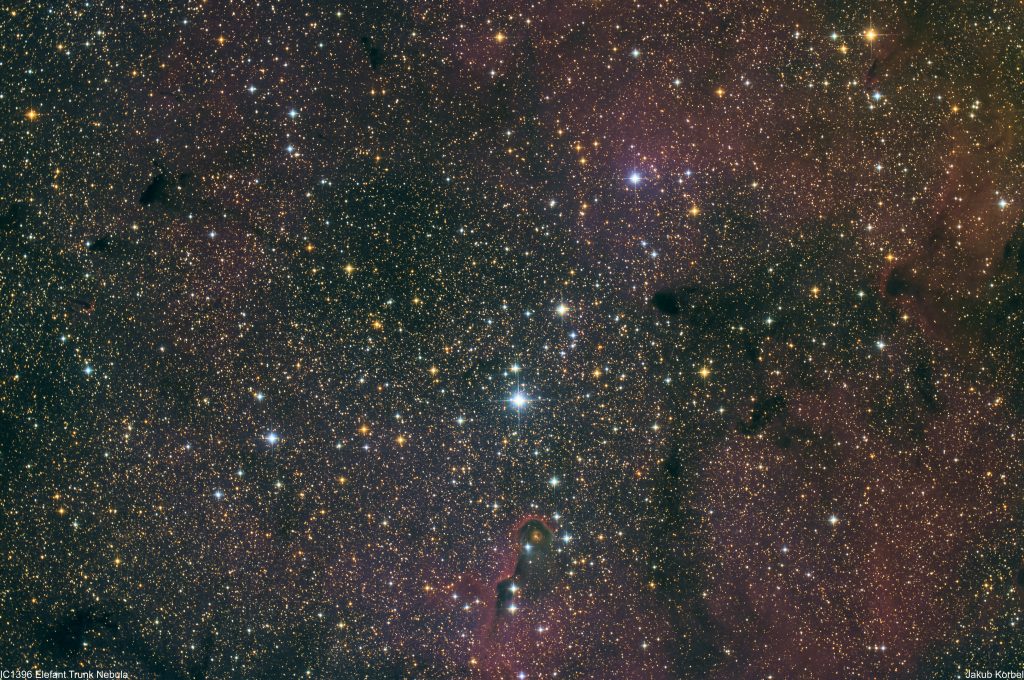A second deep space object, on which I tested the combination of Canon 6Da with WO RedCat was the NGC 2237 Rosette Nebula (a short description can be found in my previous post). The field of view of this telescope, combined with a full-frame sensor of 6Da is huge. The Rosette on the left can be simultaneously captured with the Cone Nebula NGC 2264 (on the left). I simply love this scope and I cannot wait to test it under the dark sky in broadband.
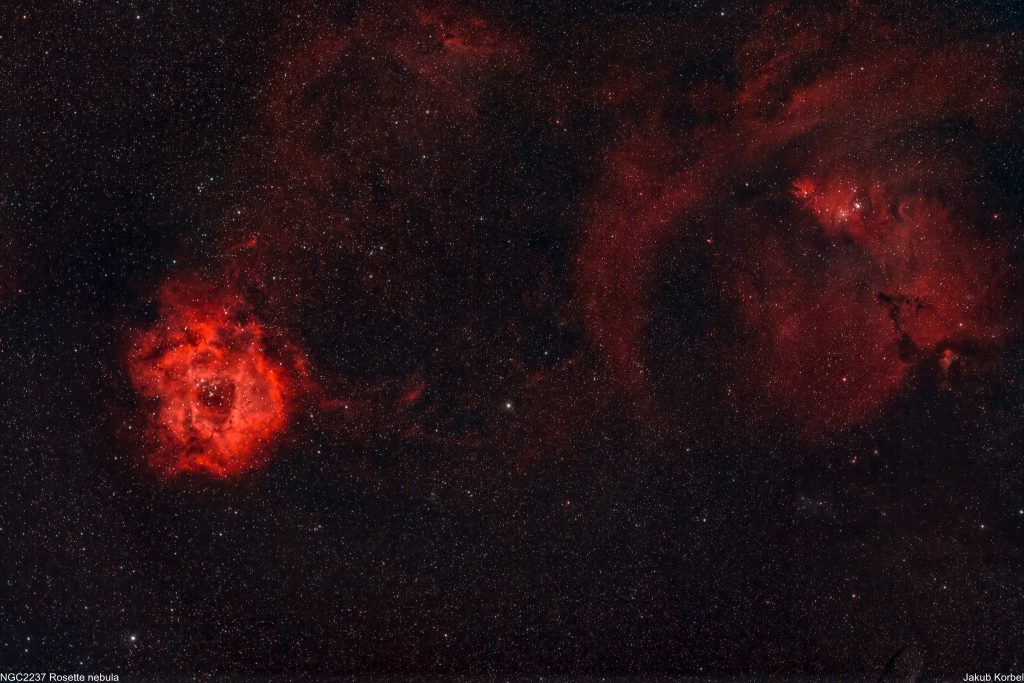
| Telescope | William Optics RedCat 51/250 f4.9 |
| Aperture | 51 mm |
| Focal length | 250 mm |
| Mount | iOptron SkyGuider Pro |
| Autoguiding | ZWO 174MM, TS 60/240 mm |
| Camera | Canon EOS 6Da |
| Corrector | no |
| Filters | Optolong L-eXtreme 2" |
| Exposure | 42x180s, Iso 1600 |
| Date | 2022-01-12 |

